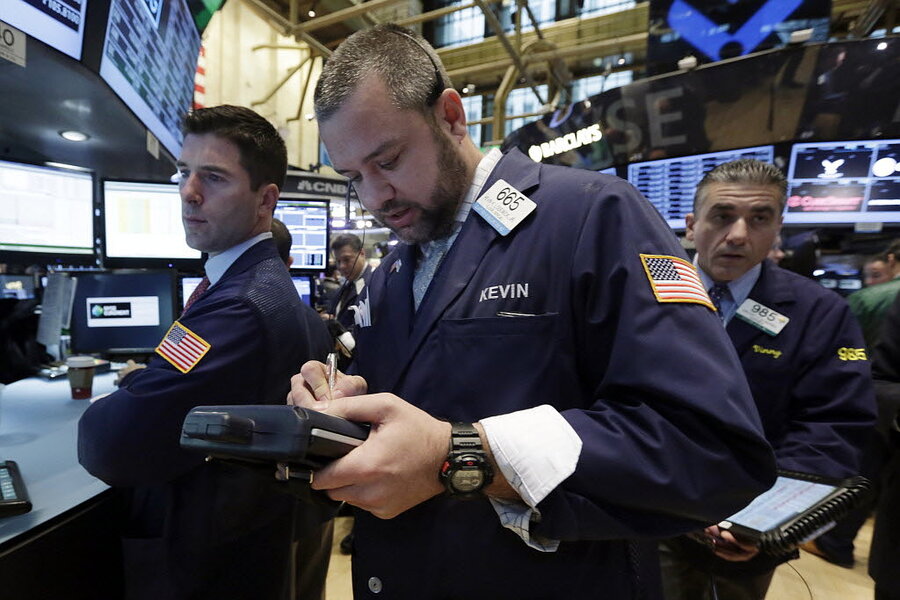US economy 2014: Finally showing signs of growing more with less help
| Washington
America’s long-delayed economic recovery may finally be gaining traction, with a reviving consumer sector prompting experts to upgrade their forecasts for 2014.
It’s possible that gross domestic product could grow 3 percent or more next year – something that hasn’t happened in the United States in any year since 2005.
And that would be without any special “fiscal stimulus” program from Washington, and with the Federal Reserve dialing back on monetary efforts to support the recovery.
Monday brought some new signs of progress: news that consumer sentiment has improved and that consumer spending rose 0.5 percent in November. Although the numbers were about on par with forecasts, the stock market rose. The Dow Jones Industrial Average advanced higher into its new realm above the 16,000 level in morning trading before closing up more than 70 points just shy of 16,300.
“Real consumer spending growth is likely to pick up in 2014 as the housing market, job prospects, and consumer mood make further gains,” said Chris Christopher, an IHS Global Insight economist, in a written analysis Monday.
The International Monetary Fund, for one, is marking up its expectations for US economic growth. IMF Managing Director Christine Lagarde said as much on Sunday, although it may be mid-January before the fund translates that comment into a specific number.
In a November survey, members of the National Association for Business Economics gave an average forecast of 2.8 percent growth for the US economy next year. Among some 51 panelists in that survey, the top 5 saw growth hitting 4 percent, while the bottom-five forecast was 1.9 percent.
A growth number like 3 percent would be a significant step forward. This year may end up with growth around 2 percent, after gains of 2.8 percent in 2012 and 1.8 percent in 2011.
Back in 2005, the US economy expanded by 3.4 percent, before sinking into the deep recession of 2007-2009.
A pickup in the growth rate promises to bring the unemployment rate down below 7 percent, where it stood in the latest Labor Department report.
In 2014, consumers and businesses will get less help from the Federal Reserve, judging by the recent announcement that the Fed is starting to scale back its monthly bond purchases (a program known as “quantitative easing” designed to keep long-term interest rates low).
And unlike 2010, the economy won't have any temporary fiscal measures in place to promote growth. But it also looks to be a year when Congress’s fiscal policies are less of a drag on growth. During 2013, the combination of federal tax hikes and spending cuts may have subtracted about 1.5 percentage points from growth.
Consumer spending rose strongly in November, partly because Americans were buying more cars and partly because of heating costs as cold weather arrived.
“Household spending remains on a strong trajectory,” possibly set to jump from a 2 percent annualized growth rate in the third quarter to 4 percent in the fourth, according to a report Monday by Oxford Economics in New York. “This should more or less offset the effects of the government shutdown” that resulted from an October budget impasse, as well as the effects of warehouses working off some excess inventories that were built up prior to autumn.
Despite the shutdown, the economy could finish off the year with a respectable annualized growth rate of about 2.4 percent for the fourth quarter.
All this doesn’t mean American families are suddenly on easy street. Many would-be breadwinners remain unemployed, income gains for workers remain slow, and households are under pressure to cover costs like health care and saving for retirement.
But Americans have made substantial progress in lightening their debt loads, relative to their incomes, since the early-2000s borrowing boom and the recession that followed.
This “deleveraging” process is symbolized partly by a decline in a gauge of debt payments as a share of income. The debt-service ratio, tracked by the Federal Reserve, has declined from 13 percent of disposable income in 2007 to 9.9 percent as of late this year – a figure that’s low even compared with the 1980s.







